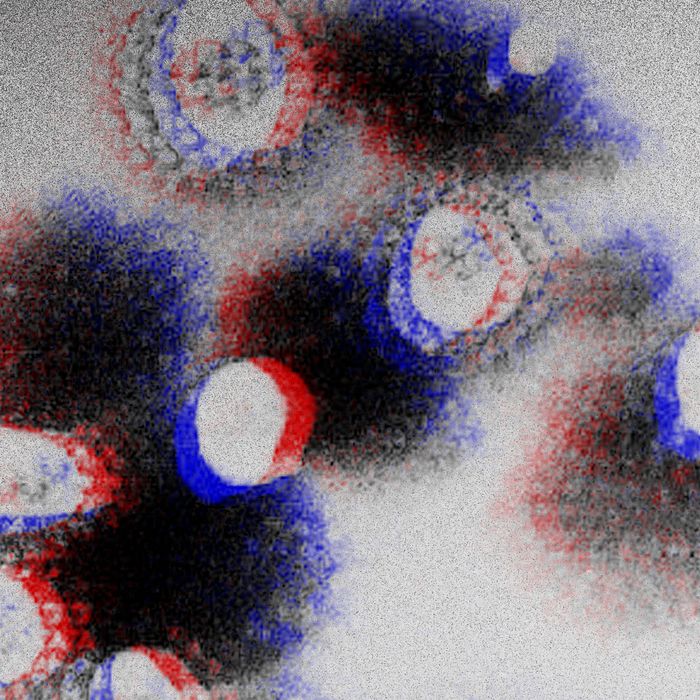
As the world awaits more data on Omicron, early reports out of South Africa — where the coronavirus variant was first reported and is driving a massive spike in new cases — have consistently characterized symptoms from most cases as either nonexistent or relatively mild. On Tuesday, Dr. Anthony Fauci described Omicron as “almost certainly” not as severe as Delta, based on the preliminary data.
Early reports aside, none of the three all-important questions — severity of disease, transmissibility, and how much it may evade vaccines — have been answered about Omicron, which was identified less than two weeks ago. As such, scientists and public-health officials have been clear about the potential danger the heavily mutated variant poses. Over the weekend, Dr. Peter Hotez told Intelligencer that Delta and Omicron should be treated as a “twin pandemic” and early lab tests of small sample size have shown the variant reducing vaccine effectiveness.
Dr. Monica Gandhi is more optimistic. “I’m persistently positive, but I’m not a persistently positive human. I just want you to know that,” Gandhi said Tuesday, laughing at the shrewd distinction in her caveat. “I’ve just thought about infectious diseases a lot.” A leading infectious-disease expert and professor of medicine at the University of California, San Francisco, Gandhi spoke to Intelligencer about how drastically different the past ten days, since Omicron was first identified in southern Africa, have been from Delta’s early days when it ravaged India, and why it’s a reason to be hopeful.
What should we make of very early data, or Dr. Fauci’s comments today, that suggest Omicron may be less deadly than Delta?
It’s very encouraging that ten days after Omicron was first reported, physicians on the ground in South Africa are still saying that most of the people who were hospitalized were unvaccinated and mostly seem to have very mild disease. That’s kind of persistent. It’s not changing. That is not what happened with Delta. In March, there was a 4 percent vaccination rate in India, and there was not this prolonged period where people were like, “Oh, it isn’t that bad.” It was really very terrible in terms of hospitalizations, severe illness, oxygen requirements, and deaths. This is a very different feeling. I find it really funny that people are saying, “Oh, well, it’s early. Let’s not trust them.” Why wouldn’t I trust my South African colleagues? I’m a long-standing HIV doctor and researcher who knows many of these investigators. I think that we should trust them.
I think there are two reasons that this could be happening. One is that the virus could have evolved to become less virulent, which we’ll need experiments to show. Or the second reason is that there’s just more immunity now, in December 2021, so it manifests more mildly. I don’t think we know the answer yet.
Let’s say that Omicron turns out to be less severe — either because it is less virulent or because there is more immunity — but more transmissible than Delta, what would it mean for the course of the pandemic going forward?
It would mean that more and more people would get immunity, or more immunity. Even if they’d already been vaccinated, they’d get even more immunity. This will stimulate T cells, B cells, and a higher level of antibodies. Omicron could still be really bad — we don’t know yet — but in the best case scenario it would hasten the time when we’re all immune and the pandemic essentially comes to an end. It could be a highly transmissible variant that will find everyone, just like Delta found a lot of people. Unfortunately, we had lower levels of immunity then. In the United States it was almost a case experiment where the hospitalizations went up in places of low vaccination and didn’t really go up in places of high vaccination. By the way, cases are going to go up in both places, because the way that we detect infection is that we just swab people’s noses whether or not it’s clinically meaningful.
Forgive me if this is a stupid misinterpretation of what you just said, but it almost sounds as if you’re saying that, if Omicron is less severe — which is still a big if! — it could potentially have a global net benefit.
That is a theoretical possibility. We don’t actually know how the 1918 influenza pandemic ended after 16 months. We didn’t do seroprevalence studies. It burned through the population in a really terrible and devastating way with at least 50 million deaths. But even now, we don’t have enough data to know if enough of the population got immunity because the disease became more transmissible. Or did the influenza virus evolve to become less virulent? We don’t know that either. We just know that it became a seasonal influenza virus. With Omicron, ten days in, we’re at the tip of this. Either way, being less virulent in these constant descriptions, is in no way a bad thing. You can’t make it bad even if you want to. It’s a good thing. That’s all I’m saying. I don’t know if this is going to be the end of the pandemic. I really don’t know, but it is possible.
You talked a bit about your colleagues in South Africa, and you’ve done research there. At this point, do we know enough about Omicron, and the people who are getting sick in South Africa, to know what to expect in the United States?
A lot of people have said over the last couple of days that there’s a younger population in South Africa than in the U.S. The median age in South Africa is 28 or 29. But the median age in India is 28.4 and what we saw in India at the beginning of Delta was not subtle. As an Indian America-based physician, I really want to be clear that India was an utter disaster. Four percent of the population was vaccinated and young people, my own relatives, died. India has the same median age as South Africa and, if you look at the graphs, cases in India went up like a wall, not because they suddenly started testing but because people were flooding the hospitals with illness. So Omicron in South Africa is very different than what we saw with Delta in India, with the same median age.
Again, we don’t know all of the reasons, but there is no doubt that this is different than Delta. To me, that means something really meaningful, which is that if we have a 70 percent vaccination rate here, we should be more protected than when we had a 52 percent vaccination rate with Delta. That’s one good thing. Also, older people here are being boosted. There were questions about whether Omicron was affecting more of the pediatric population, but that isn’t clear either because the reports are that kids were being hospitalized prophylactically to make sure that they didn’t get sick. The final thing I’ll say is that adult vaccination protects children. We saw that with the Delta variant in this country. In places with high adult vaccination rates we didn’t see so many cases for hospitalizations and children. It could be that adult vaccination here is going to protect children. There are still a lot of unknowns.
You recently commented on research about the rate of decline in antibodies after booster shots, pointing out that waning antibodies do not necessarily equate to waning immunity. Can you explain that a little
bit?
This isn’t new to COVID or anything. We have years of immunological research that shows that essentially antibodies are one arm of the immune system, they absolutely rise if you get an infection or if you have a vaccine. But then what gets produced — less so in immunocompromised individuals, which is why boosting immunocompromised individuals is so important — is cellular memory. That’s your B cells and your T cells. The way to think about those is that B cells are the recipe book to make more antibodies if they see a variant in the future. Three papers now, one from Journal of Infectious Disease, one from Science, and one from OHSU, show us that those B cells, when they make you antibodies in the future because they see a variant, will adapt their antibodies just like you adapt a recipe if you’re at a higher altitude, for yeast or whatever — I’m not a baker. The B cells know how to adapt their antibodies against a variant. That’s called adaptive immunity. Your antibodies are going to go down over time and we keep saying waning immunity, but what we mean is waning antibodies. It’s totally normal for the body to do that, that B cells will produce more aided by T cells, which are in the lung and other places to protect us from severe disease.
With an endemic virus we may keep on seeing the virus again, just like we’ve seen many viruses that are endemic. It takes a little while for those antibodies to kick in, so you could have an upper-respiratory tract infection for a couple days, until you get the antibodies in, but you’ll be protected against severe disease and that is what we’re seeing with Omicron. But we saw that with Delta too. Vaccinated people didn’t get hospitalized, it was unvaccinated, at least in this country.
How has Omicron changed, at this point, what we’re looking at in terms of reinfection?
Clinically, from around the world, those who are vaccinated are asymptomatic, like the Portugal soccer team, most of them didn’t have any symptoms. Or they have mild symptoms, even if they’re boosted. Do you define that as success or failure? Immunologically, I define that as a profound success. Yes, your antibodies may have come down, but it’s not causing severe disease. Clinically, that should be called a vaccination success.
We have had a hard time transitioning, when we got to Delta, into the idea that vaccines protect us against severe disease but may not protect us against all reinfections. That difficulty is still reflected in our words about reinfection. Your antibodies will go down over time, that’s just literally how the immune system works. It’s actually a very protective thing for them to do, the immune system really can’t keep antibodies up all the time. It’s going to keep on happening, we’re going to have mild reinfections and that’s why the final point that I’d like to make is that we really think that we need to change the metrics used to inform policy. Marin County, for example, a big county, has five people in the hospital with COVID right now. Really low. The health officer dropped the mask mandate a month ago, and people said, “Shouldn’t you put it back because of Omicron?” He said, “Well, no, we have a 90 percent vaccination rate and we have low hospitalizations, so we’re doing a good job as public-health officials.” He’s right. Cases are going to go up. Health departments have to continue to track cases but our metrics on policies of masking and distancing and closing schools and businesses, if we make the metric around hospitalizations, there are many places that are doing very well, including New York City.
But many places are not. We’re seeing hospitalizations in upstate New York skyrocketing.
Is there a lower vaccination rate there than in the city?
In most counties, yes.
That’s what’s happening in California as well. Places in central California with lower rates of vaccination are having increased hospitalizations. I think that what happened with Delta and I’m sure it’s happening with Omicron, that places of high vaccination, like San Francisco, Marin, and New York City, are keeping their hospitalizations controlled.
More on omicron
- What to Know About the New COVID Booster Shots
- The Dismantling of Hong Kong
- What We Know About All the Omicron Subvariants, Including BA.2.12.1






























